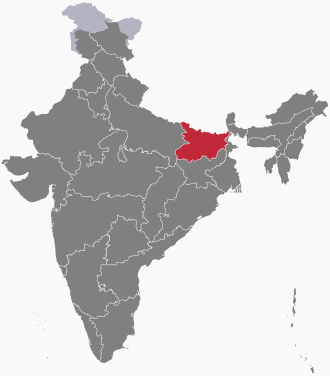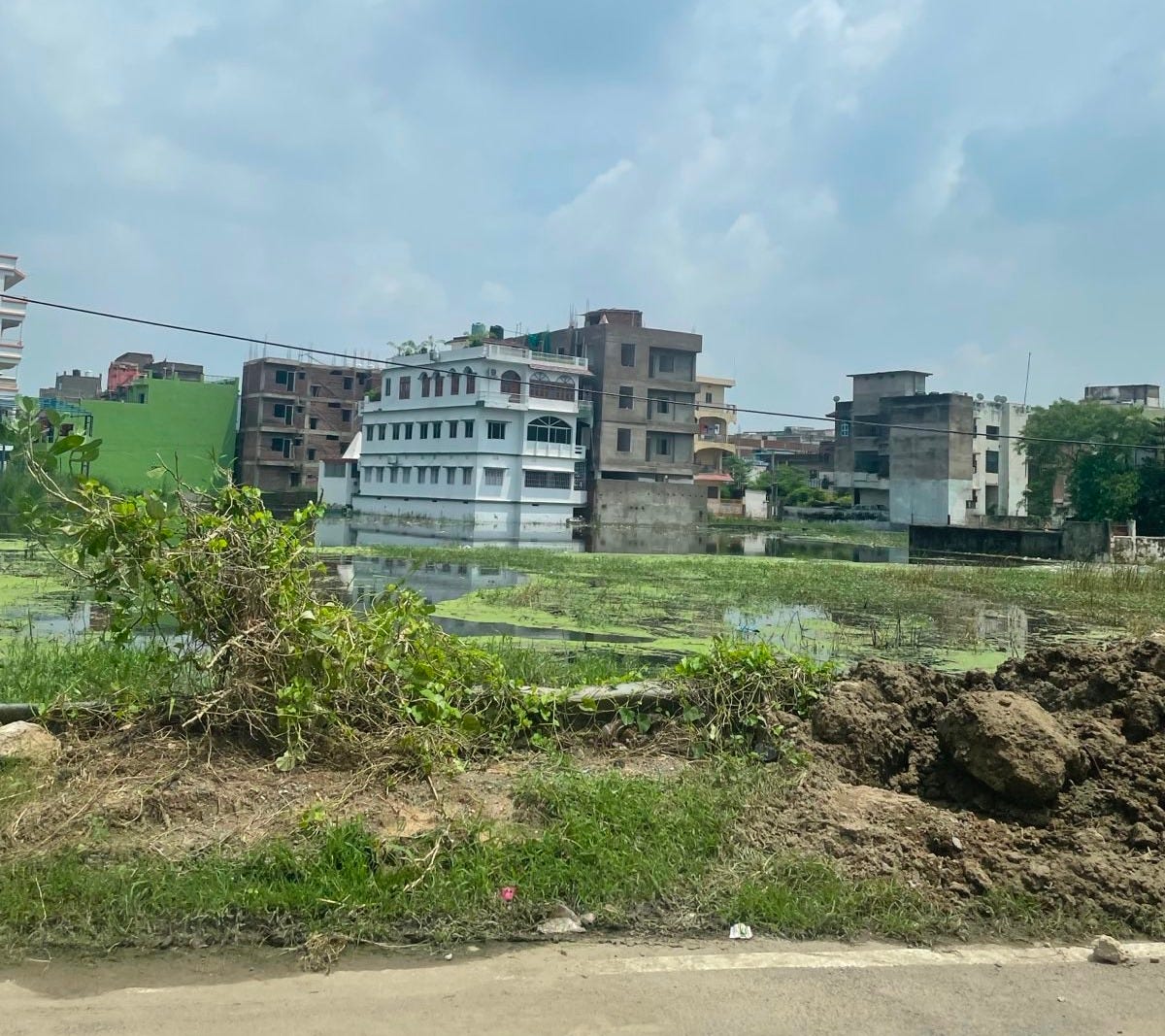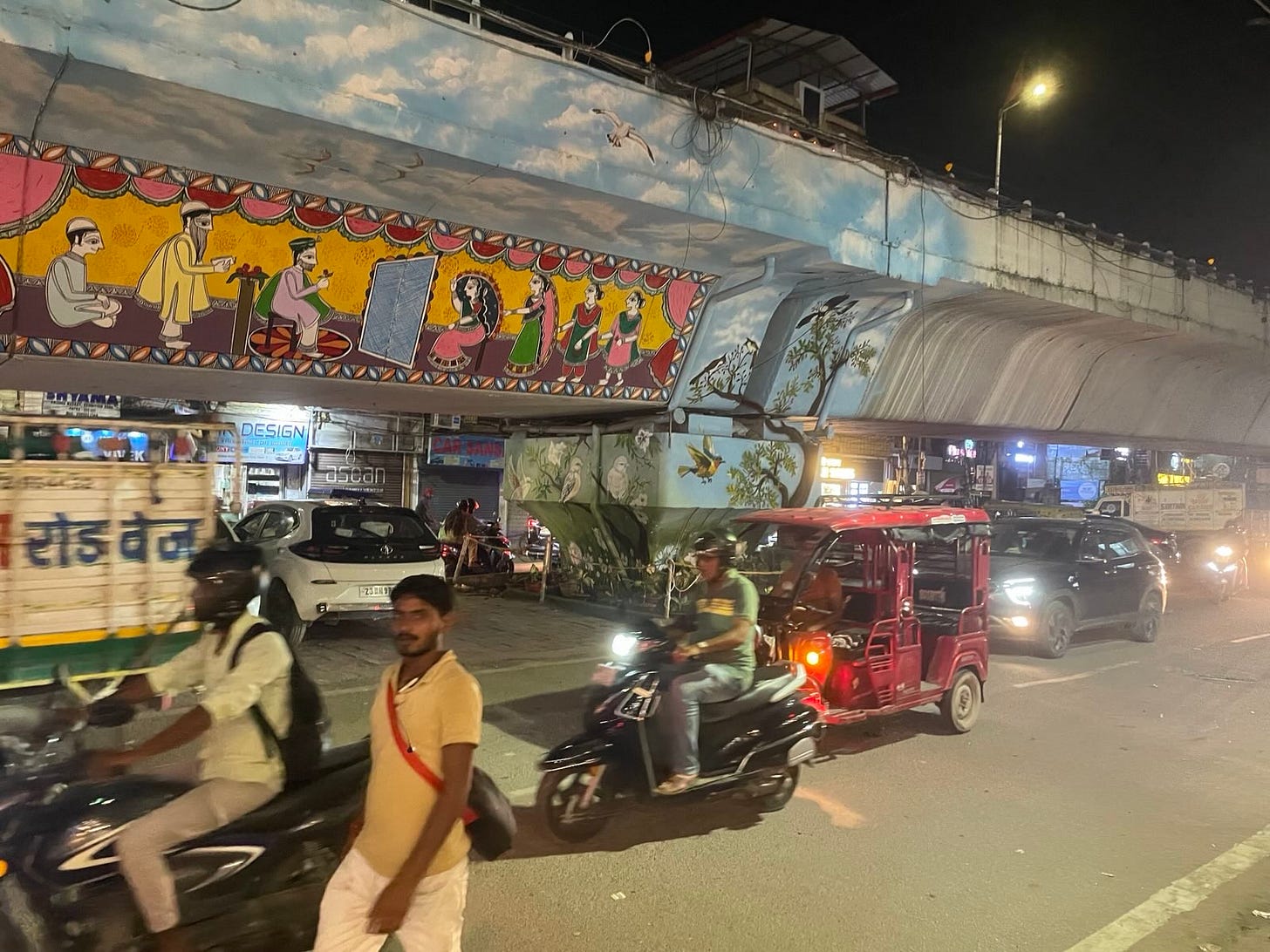I spent the last few weeks in India, first traveling around the southern states of Kerala and Tamil Nadu and then as part of an excellent delegation organized by my friends Arjun Ramani and Sparsh Agarwal, which visited Delhi, Bangalore, and West Bengal. Because many other Westerners have been to the places I just mentioned, I wanted to write some brief travel notes on a place I saw toward the end of my time in India—the state of Bihar, in India’s north.
Bihar is India’s second most populous state: within a small territory on the Nepalese border Bihar hosts 130 million people, more than in all of Mexico or Japan. It is also India’s poorest state. Its per capita GDP is about 40 percent of the Indian average; its literacy rate is the second-lowest of any Indian state; and it records a worse performance on the Human Development Index than anywhere else in India, with a score that puts it on par with Uganda and Cameroon. This New York Times article from 2010 provides a good encapsulation of Bihar’s reputation within India:
For decades the sprawling state of Bihar, flat and scorching as a griddle, was something between a punch line and a cautionary tale … Criminals could count on the police for protection, not prosecution. Highwaymen ruled the shredded roads and kidnapping was one of the state’s most profitable businesses. Violence raged between Muslims and Hindus, between upper castes and lower castes. Its economy, peopled by impoverished subsistence farmers struggling through alternating floods and droughts, shriveled. Its government, led by politicians who used divisive identity politics to entrench their rule, was so corrupt that it required a newly coined phrase: the Jungle Raj.
Things have certainly changed over the last 15 years, but Bihar’s reputation within India remains abysmal. If you speak to Indians about Bihar, you’ll be reminded of how some Americans talk about West Virginia and Mississippi: the word that comes up the most is “backwards.”
I’d wanted to visit Bihar during my trip to get a sense for as much of India as possible—the trip had been biased toward the south and toward the more developed parts of the country. Luckily, during my time in India I met a wonderful startup founder named Akash, who lived in Bangalore but was planning on visiting his family in Bihar. He invited us to join him and I jumped at the opportunity.
So after spending a few days in West Bengal as the delegation concluded, my girlfriend and I took a barebones sleeper bus from Siliguri, a lovely city based around tourism and the cultivation of Darjeeling tea, to the city of Muzaffarpur, in central Bihar. After a night of poor sleep on the bus I was awoken around 5:30 AM by a honking contest between various drivers. (One of my least favorite things about India is how much drivers honk, and how loud their horns are.) Not long afterward we had entered Muzaffarpur.
I can’t say that Muzaffarpur impressed me. It is Bihar’s fourth-largest city by population, but this doesn’t mean much: 90 percent of Biharis live in the countryside, and Muzaffarpur is thought to have only about 500,000 people. In appearance Muzaffarpur is very much a classic poor Indian city. There was a lot of trash, a lot of half-constructed buildings of shoddy quality, and a few wretched-looking animals roaming around. We were there during monsoon season and it had been raining heavily, which made everything muddy and gave the city an air of shabbiness.
From Muzaffarpur we took another bus ride to see Akash’s family in a town called Motihari, which has the distinction of being both George Orwell’s birthplace and the site from which Gandhi launched his first satyagraha campaign of civil resistance. Motihari has about 200,000 residents but feels more like a big town than a small city: it is the headquarters of an overwhelmingly rural district of five million people called East Champaran and seems to operate mainly as an agricultural market town. Practically all Indian cities but the very largest and richest ones have farm animals roaming around—one of the great things about visiting India is watching rickshaw drivers maneuver around sleeping cows—but Motihari had more animals than I’d seen anywhere else in India.
In the year 2000, The Guardian sent a journalist named Luke Harding to Motihari after hearing rumors that the house in which Orwell was born had become a cowshed. Harding made his way to Motihari and wrote this:
Motihari now is a chaotic, mud-infested town … It has rickshaws, lychee sellers, potholes, itinerant farm animals and small shops. There are few cars; no one can afford them. Motihari is so far off the beaten track that its most expensive hotel, the Raj, costs £4 a night (cockroaches gratis).
In its broad contours the picture Harding offers of the town still holds true. Motihari is indeed mud-infested, though I didn’t find it especially chaotic by Indian standards. There are still itinerant farm animals, lychee sellers, small shops, and a decent number of human-drawn rickshaws. (Everywhere else in India these had been outmoded by electric rickshaws; only in Bihar did I see a few of the old-style human-drawn things.)
But it was also obvious, comparing the Motihari I visited to the one Harding described, that much had changed for the better. Motihari now has a few cars and the infrastructure is decent. The town now has a KFC and a Domino’s. Lemon Tree, India’s largest hotel chain, is in the process of building a luxurious-looking Motihari location. (I stayed with Akash’s family so didn’t get to try out the Raj or any other hotel in Motihari.) There are three separate Gandhi-related parks or memorials, including a new one with a giant statue of Gandhi, a small rotunda with a Gandhi exhibit, and a nightly show with patriotic music, lights, and waterworks. I was informed that it was completed in the last year.
In contrast the brick bungalow in which Orwell was born really is utterly derelict, with basically no attempt at preservation. It sits in front of an untended field populated by goats and pigs, and the only indication of its potential significance is a sign donated by the local Rotary club.
I was pleasantly surprised by Motihari. The town is poor but quite attractive—the nicest Indian cities are the ones with a few hundred thousand people and no more—and the people were wonderful. Motihari is isolated enough that the presence of two Westerners attracted considerable attention. Children and teenagers took photo after photo with us; no one spoke English so they communicated mainly with gestures.
Probably my favorite thing about Motihari, and about Bihar in general, was the food. If you enjoy Indian food as I do and are not a vegetarian then you should visit Bihar if only to experience some of the best meat dishes one can find in India. Bihari food employs a wonderful mustard oil base which gives an earthiness and subtle bitterness to every meal. I was taken to an incredible roadside place called Jaiswal Dhaba in a village called Bhawanipur on the outskirts of Motihari, which is known for a dish of mutton slow-cooked in an earthen pot. It was one of the best meals I had in India. The meat was soft and savory with only a few flecks of bone and the goat’s liver had the texture of a firm custard. I was told that the dish has found its way to Delhi and Bombay and found great success there under the name of “Champaran mutton.”
After spending some time with Akash’s family we took a train from Motihari to Patna, the state capital, best known in a previous iteration as the ancient city of Pataliputra—the seat from which Ashoka ruled the Maurya empire. I had wanted to see rural Bihar and was not disappointed. The train itself was sleek and comfortable, better than the ones I’d experienced in southern India, and the vistas outside the window were Bihar as I’d imagined it: distant figures in colorful garb stooped amidst dense fields, rows of shacks, gangs of children in the distance playing with rocks or chunks of wood, small armies of men in motorcycles waiting for our train to pass.
As we were approaching Patna, we saw that the rain of the last few days had caused the water level in a suburb of the city called Rukanpura to reach to the level of the doors. The flooding of the last few days had apparently displaced a hundred thousand people.
When we arrived in Patna we were immediately surrounded by a gaggle of taxi drivers who spoke no English and could only repeated the words “taxi” and “airport.” This scrum of supplicants surrounded us until we found a suitable driver on Uber and made our way out. The locals started at us endlessly and were not as friendly as in Motihari.
The infrastructure of Patna itself is still terrible and had been made worse by recent flooding. Much of the city lacks a well-developed drainage system, and so as we went into the city we could see that significant stretches of land were covered in brownish water. I was able, however, to find a decent hotel.
Probably the most striking thing about Patna was how few women were on the street. In other parts of India, particularly in the south, I saw about as many women as men walking on the street; but in Bihar it seemed like seven or eight of every ten people on the street were men.
All over Patna there were countless political posters. Within India, Biharis have a reputation for being highly political: one Indian friend told me that “when a group of friends gets together in Bihar, they will talk about politics and not sports.” Politics is ubiquitous but not particularly ideological: Bihar’s politics are the most caste-dominated of any state in India.
After some time in Patna we had to start making our way back to Delhi. A few months before our visit to Bihar, the prime minister had inaugurated a new terminal building for Patna’s airport, the Jay Prakash Narayan International Airport. The funny thing about the Jay Prakash Narayan International Airport is that it’s not really an international airport: its sole international flight, to Nepal, has been suspended since 1999. Regardless it’s a decent regional airport. It has a nice south Indian restaurant and a few soon-to-be-opened establishments—a Subway, a KFC, and a coffee place called “Barista.” The airport has free WiFi, but there’s no way to sign up; I had to find an airline employee and ask her for the password, which she found somewhere in her WhatsApp history.
It was a clear night when our flight out of Patna began its ascent, and within a few minutes when I looked down from the plane window Bihar had been enveloped in darkness.










Great write up. I lived with a poor family in Saran along the Ganges for a few weeks in 2013 doing clean cookstove research. Bihar is a wild place.